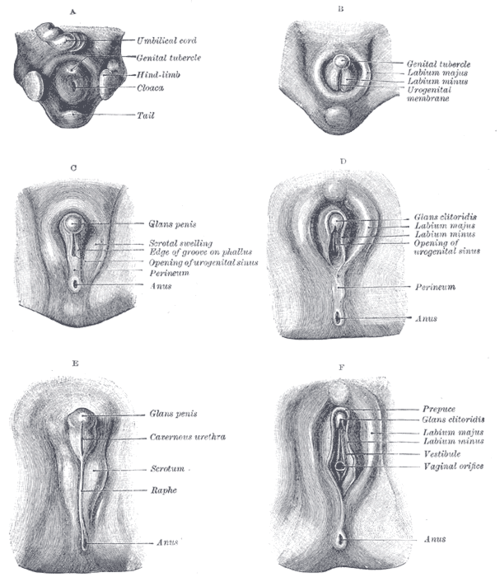Labioscrotal swelling
| Labioscrotal swelling | |
|---|---|
 Stages in the development of the external sexual organs in the male and female. | |
| Details | |
| Precursor | genital tubercle |
| Gives rise to | Labia majora, Scrotum |
| Identifiers | |
| Latin | tuberculum labioscrotale |
| Code | TE E5.7.4.0.1.0.4 |
The labioscrotal swellings (genital swellings or labioscrotal folds) are paired structures in the human embryo that represent the final stage of development of the caudal end of the external genitals before sexual differentiation. In both males and females, the two swellings merge:
- In the female, they become the posterior labial commissure. The sides of the genital tubercle grow backward as the genital swellings, which ultimately form the labia majora; the tubercle itself becomes the mons pubis. In contrast, the labia minora are formed by the urogenital folds.[1]
- In the male, they become the scrotum.
References
This article incorporates text in the public domain from the 20th edition of Gray's Anatomy (1918)
External links
- "Development of Male External Genitalia", at mcgill.ca
- "Development of Female External Genitalia", at mcgill.ca
- Diagram at mhhe.com
- Swiss embryology (from UL, UB, and UF) ugenital/genitexterne01
- MedEd at Loyola urology/nlpendv.htm
| ||||||||||||||||||
This article is issued from Wikipedia - version of the Wednesday, April 22, 2015. The text is available under the Creative Commons Attribution/Share Alike but additional terms may apply for the media files.